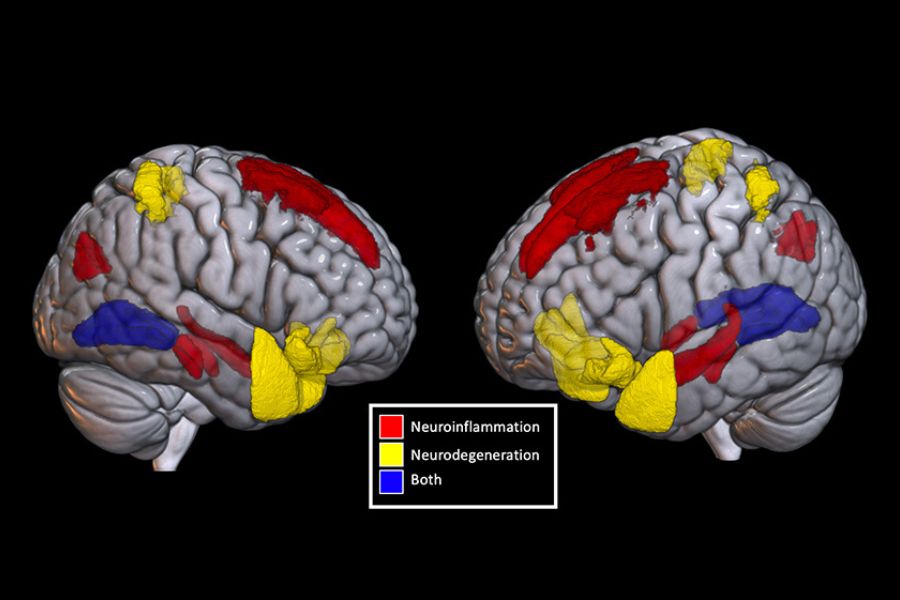
Dr. Frances Chung, a clinician investigator at UHN’s Krembil Brain Institute, is the winner of the 20th annual UHN Inventor of the Year Award for her work re-imagining the standards of care for patients living with sleep apnea through the development of the STOP-Bang clinical questionnaire.
A screening tool originally created to identify patients with undiagnosed sleep apnea for the prevention of critical incidents during surgery, STOP-Bang has broadened its adoption as a global standard diagnostic tool within 40 geographic regions and 500 institutions across a wide range of industries, informing preventative care and treatment for sleep apnea.
“It was curiosity and perseverance that led to the development of the STOP-Bang tool, and today, it is saving and improving lives around the globe,” says Dr. Chung.
Inventor of the Year Award
Sponsored by Commercialization at UHN, the Inventor of the Year Award recognizes an individual or team whose invention has made a substantial and noteworthy commercialization contribution leading to A Healthier World.
“The rapid scaling of Dr. Chung’s revolutionary yet simple STOP-Bang clinical tool is changing the vast landscape of sleep apnea diagnosis and treatment, ultimately contributing to A Healthier World,” says Dr. Brad Wouters, Executive Vice President of Science and Research at UHN.
“Other sleep scales exist out there, but none are simple enough for patients to do at home with such a high degree of accuracy.”
Sleep apnea is the most prevalent sleep-breathing disturbance, associated with other health conditions such as coronary artery disease, hypertension, diabetes mellitus, renal disease, congestive heart failure and even cognitive impairment.
Even though globally 936 million people are thought to have the condition, an overwhelming 80 per cent to 90 per cent of cases are estimated to remain undiagnosed, according to CPAP.com.
“UHN is proud to have commercialized this highly effective clinical tool with rapid access for partners and patients around the world,” says Laura Farran, Principal, Licensing and Commercialization, Biomaterials and Clinical Tools, UHN.
“Key to STOP-Bang’s widespread adoption has been the deployment of a simple, standardized contract and a pricing model that facilitates broad adoption,” she says. “The tool is available either free-of-charge for non-profit use, a low annual fee for corporate health partners, and a pay-per-administration fee for valued industry partners, such as administration during clinical trials.”

About the Inventor
Well-regarded in the field of anesthesiology, Dr. Chung is the ResMed Chair in Anesthesia, Sleep and Perioperative Medicine Research at UHN. She is the co-Founder and Past President of the Society of Anesthesia and Sleep Medicine at UHN, a professor of the Department of Anesthesiology and Pain Medicine at the University of Toronto, and is ranked as one of the top 30 female scientists in Canada and best 1000 female scientists in the world, according to Research.com.
Dr. Chung developed the STOP-Bang tool after hypothesizing that post-operative critical incidents and deaths might be related to sleep apnea due to its obstruction of the upper airway. After conducting polysomnography (sleep studies) on hundreds of patients, she determined that a high proportion of patients had undiagnosed sleep apnea – with morbidly obese Caucasian patients (especially males) and East Asian populations with retrognathia (receding jaw) at increased risk.
Dr. Chung created the STOP-bang questionnaire as a simple yet effective way to screen for sleep apnea.
About STOP-Bang: simple yet life-saving
With the support of the Department of Anesthesiology and Pain Medicine at UHN, Dr. Chung developed and validated STOP-Bang over a period of two years, and worked to advance its applications within surgical settings. STOP-bang is now widely embraced by numerous institutions globally – with contracts in place with various hospitals, dental clinics, transportation services including the railway industry, and even NASA – a total of nearly 600 licences bringing in nearly $3 million in licensing revenues reinvested into further research at UHN.
A simple online tool, STOP-Bang – an acronym for snoring, tiredness and other commonplace symptoms of sleep apnea – has a diagnostic accuracy of over 80 per cent as validated by laboratory polysomnography (sleep studies). The tool has over 2,600 citations and has been well validated in the general population across multiple ethnicities.
Celebrating invention – in every form
“The success of STOP-Bang proves that even a clinical tool such as a questionnaire can be an important invention when you consider both the incredible patient impact and widespread commercialization potential,” says Laura Farran.
Remarkably, even Dr. Chung was initially unaware that her important clinical tool was an invention ripe for commercialization. Today, reflecting on the success of STOP-Bang and her UHN Inventor of the Year achievement, Dr. Chung offers a key piece of advice about perseverance.
“I call it the Black Swan phenomenon,” explains Chung. “Every problem has a solution.
“If you see something out of the ordinary, keep on probing and don’t give up.”


